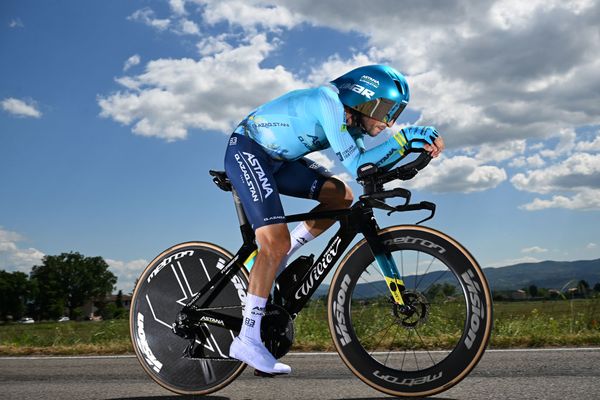Clipless pedals: what are they and how do you use them?
We explain everything you need to know when going clipless.
Tom Hallam-Gravells
Online Production Editor
While using clipless pedals can be daunting at first, they’re relatively easy to master. More than that, they can be a great tool for improving your speed and efficiency on the bike, so they’re a useful thing to be able to include in your set-up. If you’ve never used them before, we’re here to guide you through. Here's how to use clipless pedals for the very first time.
What are clipless pedals?
Before we get ahead of ourselves, there’s one important question to answer: what actually are clipless pedals?
Contrary to their confusing name, clipless pedals are designed so that you can clip your shoes into them, securing your foot in place. The name comes from the fact that you just clip in on the base of your shoe, rather than the old-fashioned method of having an over-the-toes strap that would hold your foot to the pedal.
There are quite a few variations out there, but clipless pedals generally fall into two categories.
Off-road

© GCN
Off-road pedals are small and double sided
Off-road pedals are usually double-sided which means you can clip into both sides. They work in combination with small, two-bolt design cleats which are specially designed for mountain bike shoes.
Road

GCN
Road pedals have a larger platform and a one-sided mechanism
Next up are road bike pedals. These differ from off-road pedals in a few key ways.
They generally have a wider platform and a lower spring tension. Both of these factors make it easier to clip in and out of the pedals. Most also feature a spring adjustment which allows you to adjust the tension, affecting how easy it is to unclip.
They work with road-specific cleats which use a three-bolt design. Road cleats generally offer different amounts of float. Float refers to the amount you can rotate your foot while clipped into the pedal without unclipping. The more float a cleat has, the more you can rotate your foot.
Practice indoors

© GCN
Practice indoors first
Now that we’ve got the confusing name out of the way, how do you actually use clipless pedals?
It’s tempting to go straight onto the road to try to learn, but you should avoid this. Instead, spend 20 minutes getting used to them in a static, indoor position, preferably using a home trainer. If you don't have one, you can just use a wall or, ideally, two walls along a corridor so that you’re supported on both sides.
Found the perfect spot? Great! Now it’s time to practise:
- Before you start, choose which foot you will clip in with first and make sure the pedal you’ll be clipping into is as low as possible.
- Place the front of the cleat over the front of the pedal and push down. You should hear a loud snap when you are clipped in.
- To unclip from the pedal, twist your foot, ideally leading with your heel.
Practise clipping your foot in and out until you’re used to it. If you’re on an indoor trainer, you can take things to the next level by clipping both feet in, before trying some pedal strokes. Keep practising this for 20 to 30 minutes before heading outside.
Practice outdoors

© GCN
Practice on a soft surface to build confidence
Feeling more confident? It’s time to take things to the next level by heading outdoors. At this stage, try to find a grassy park and avoid any roads. It’ll be much safer practising in a park as there’s no traffic to contend with, and grass provides a softer landing if you fall.
Once you’ve found the perfect spot, it’s time to start practising. Similarly to what you did indoors, you’ll need to practise clipping in and unclipping from the pedals. Of course, this time you’ll be moving so there are a few steps to follow:
- Select the right gear. Avoid using a hard gear as it’ll be tough to get going. However, you also don’t want one that’s too easy as you’ll end up pedalling too fast.
- Before you push off, clip into one pedal with your preferred foot. Keep your other foot on the floor for balance.
- Kick off and then pedal a couple of times to gain some speed before clipping in the second foot. It’s important to gain a little bit of speed as you’ll probably have to look down to clip in your second foot and you're going to lose a bit of speed while doing it.
- Finally, try to unclip before you want to come to a stop. It’s much trickier when you’ve already stopped and usually leads to a tumble. For extra peace of mind, unclip both pedals so that you can put either foot down when you stop.
Keep practising this until you feel comfortable and have built up further confidence, at which point you can start practising on the road. Remember, there’s no need to rush things and you should only start practising on the road when you feel ready - don’t rush it!
Follow these tips and you’ll soon master using clipless pedals, and feel the riding benefits they bring.







.jpg?w=600&auto=format)



.jpg?w=600&auto=format)